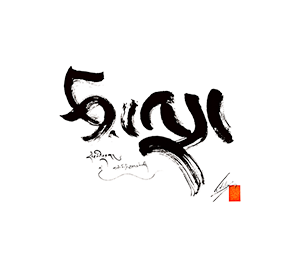Basics of Buddha-Nature: Mipham's Roaring Lions Public
Audio
Audio
Dr. Pettit speaks about the basics of Buddha-Nature (bde gshegs snying po’i rigs = sugatagarbhagotra) according to Mipham Rinpoche, with additional reference to some Pāli Suttas, Nāgārjuna’s Praise of Dharmadhatu, and the Uttaratantra. He bases his remarks on Mipham’s text, The Lion’s Roar: Exposition on Buddha Nature (bde gshegs snying po stong thun chen mo seng ge nga ro). John Whitney Pettit holds graduate degrees from Harvard University and Columbia University in the study of World Religions and Buddhist Studies. He has been the student of the previous Dilgo Khyentse Rinpoche and also heard or translated teachings from prominent masters representing the Nyingma tradition and the other schools of Tibetan Buddhism. He is the translator and author of Mipham’s Beacon of Certainty (1999) and of a forthcoming anthology volume on the subject of Buddha-nature. Since 1998 he has lived in or near New York’s Hudson Valley, working on occasional translations, carving mani stones and communing with the genius loci. He spoke with students at RYI on the 27th of March, 2019. (Adapted from Source Aug 13, 2020)
Sources Mentioned
Mipam Gyatso: Lion's Roar: Exposition of Buddha-Nature
Mipam lays out his view of buddha-nature in a short text called Lion's Roar: Exposition of Buddha-Nature, which draws on another of the five treatises of Maitreya, the Sublime Continuum. Here he presents three main arguments showing why all beings have buddha-nature. He also distinguishes his view of buddha-nature, which he portrays as the unconditioned unity of emptiness and appearance, from other traditions' views. Namely, he contrasts his view with traditions that maintain buddhanature as truly real and not empty (Jonang), traditions that hold buddhanature to be simply the mind's absence of true existence (Geluk), and traditions that maintain that the cognitive quality of buddha-nature—the element that is in unity with emptiness—is impermanent (a Sakya view).
(Source: Duckworth, Douglas. Jamgön Mipham: His Life and Teachings. Boston: Shambhala Publications, 2011: p 58.)
Maitreya, Asaṅga: Ratnagotravibhāga Mahāyānottaratantraśāstra
The Ratnagotravibhāga, commonly known as the Uttaratantra, or Gyu Lama in Tibetan, is one of the main Indian scriptural sources for buddha-nature theory. It was likely composed during the fifth century, by whom we do not know. Comprised of verses interspersed with prose commentary, it systematizes the buddha-nature teachings that were circulating in multiple sūtras such as the Tathāgatagarbhasūtra, the Mahāparinirvāṇasūtra, and the Śrīmaladevisūtra. The Tibetan tradition attributes the verses to the Bodhisattva Maitreya and the commentary to Asaṅga, and treats the two as separate texts, although this division is not attested to in surviving Indian versions. The Chinese tradition attributes the text to *Sāramati (娑囉末底), but the translation itself does not include the name of the author, and the matter remains unsettled. It was translated into Chinese in the early sixth century by Ratnamati and first translated into Tibetan by Atiśa, although this text is not known to survive. Ngok Loden Sherab translated it a second time based on teachings from the Kashmiri Pandita Sajjana, and theirs remains the standard translation. It has been translated into English several times, and recently into French. See the Ratnagotravibhāgavyākhyā, read more about the Ratnagotravibhāga, or take a look at the most complete English translation in When the Clouds Part by Karl Brunnholzl.
Nāgārjuna: Dharmadhātustava
Also known as the Dharmadhātustotra, it is a praise written in verse attributed to Nāgārjuna. A Sanskrit manuscript found in Tibet was recently published in 2015. However, before this it was only extant in Tibetan and Chinese translations, though fragments of this text were found to be quoted in other Sanskrit texts. It is notable as perhaps the only work of Nāgārjuna that takes a positivistic view of emptiness and the existence of wisdom, in this case represented by the dharmadhātu. In fact much of the language echoes descriptions of buddha-nature. Though modern scholarship has thus called the attribution of this text to Nāgārjuna into question based on its contents, Tibetan scholars have utilized the text as a support for works that promote or defend tathāgatagarbha and it is especially prominently featured in works on other-emptiness (gzhan stong) and Great Madhyamaka.
People Mentioned
Related Multimedia
About the recording
| Featuring | John W. Pettit |
|---|---|
| Creator | Rangjung Yeshe Institute |
| Related Website | https://www.ryi.org/ |
| Citation | Pettit, John W. "Basics of Buddha-Nature: Mipham's Roaring Lions Public." Recorded March 27, 2019 at Rangjung Yeshe Institute, Nepal. Audio, 1:14:20. https://soundcloud.com/rangjung-yeshe-institute/basics-of-buddha-nature-miphams-roaring-lions-public. |
